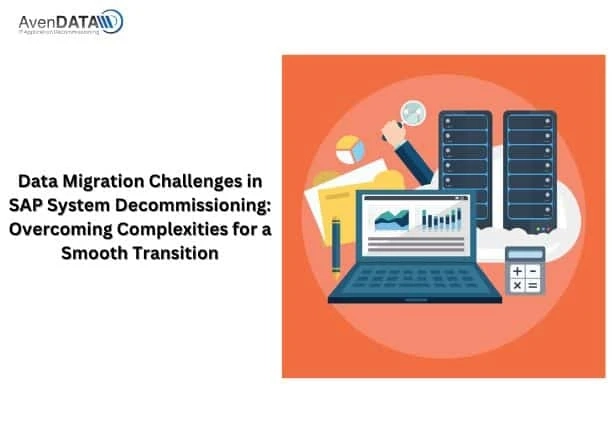In the dynamic realm of enterprise IT, the decision to decommission legacy SAP systems in favor of advanced solutions like SAP HANA marks a strategic move towards innovation and efficiency. However, this journey is not without its set of challenges, especially when it comes to the intricate process of data migration. In this blog, we delve into the complexities surrounding data migration during SAP System Decommissioning and outline key strategies to overcome these challenges, ensuring a smooth and successful transition.
Understanding the Data Migration Landscape
Data migration is a critical phase in the SAP System Decommissioning process, involving the transfer of data from legacy systems to the new SAP HANA environment. Several factors contribute to the complexity of this task:
1. Diverse Data Formats and Structures
Legacy systems often store data in different formats and structures, making it challenging to seamlessly integrate information into the standardized format required by SAP HANA. Understanding and addressing these variations is vital for maintaining data integrity.
2. Volume and Velocity of Data
The sheer volume of data and the speed at which it must be migrated pose significant challenges. Efficient strategies are needed to handle large datasets while minimizing downtime and ensuring business continuity throughout the migration process.
3. Data Quality and Consistency
Ensuring the quality and consistency of data is paramount. Inconsistent or inaccurate data can lead to operational inefficiencies and hinder the functionality of the new SAP HANA system. Robust data cleansing and validation processes are essential.
4. Compliance and Security Concerns
Adhering to regulatory compliance and maintaining data security during migration is non-negotiable. Failure to comply with industry standards can result in legal consequences and compromise the confidentiality of sensitive information.
Strategies for Overcoming Data Migration Challenges
1. Comprehensive Data Assessment
Before initiating the migration process, conduct a thorough assessment of existing data. Identify data types, formats, and potential inconsistencies. This knowledge forms the basis for developing a tailored migration strategy.
2. Data Cleansing and Transformation
Implement robust data cleansing and transformation processes to standardize data formats and ensure consistency. Automated tools can streamline these tasks, reducing the margin for error and enhancing overall data quality.
3. Prioritization and Phased Migration
Prioritize data based on relevance and criticality to business operations. Implement a phased migration approach, focusing on high-priority datasets first. This minimizes the impact on daily operations and allows for iterative improvements.
4. Utilization of Migration Tools
Leverage advanced migration tools and technologies designed for SAP HANA. These tools streamline the migration process, offering features such as automated mapping, data validation, and error handling, contributing to a more efficient and reliable transition.
5. Collaboration with Stakeholders
Engage key stakeholders, including data owners, IT teams, and end-users, throughout the migration journey. Clear communication and collaboration ensure that everyone is aligned with the migration goals, fostering a smoother transition.
6. Rigorous Testing
Prioritize testing at every stage of the migration process. Conduct thorough testing of data integrity, system functionality, and performance to identify and address issues proactively. Rigorous testing minimizes the risk of post-migration disruptions.
Conclusion
Successfully overcoming data migration challenges is pivotal for realizing the full benefits of SAP System Decommissioning and transitioning to SAP HANA. By adopting a strategic approach that combines comprehensive assessment, meticulous planning, and the utilization of advanced tools, organizations can navigate these complexities with confidence. The journey toward a more efficient and innovative IT landscape begins with a well-executed data migration strategy.



